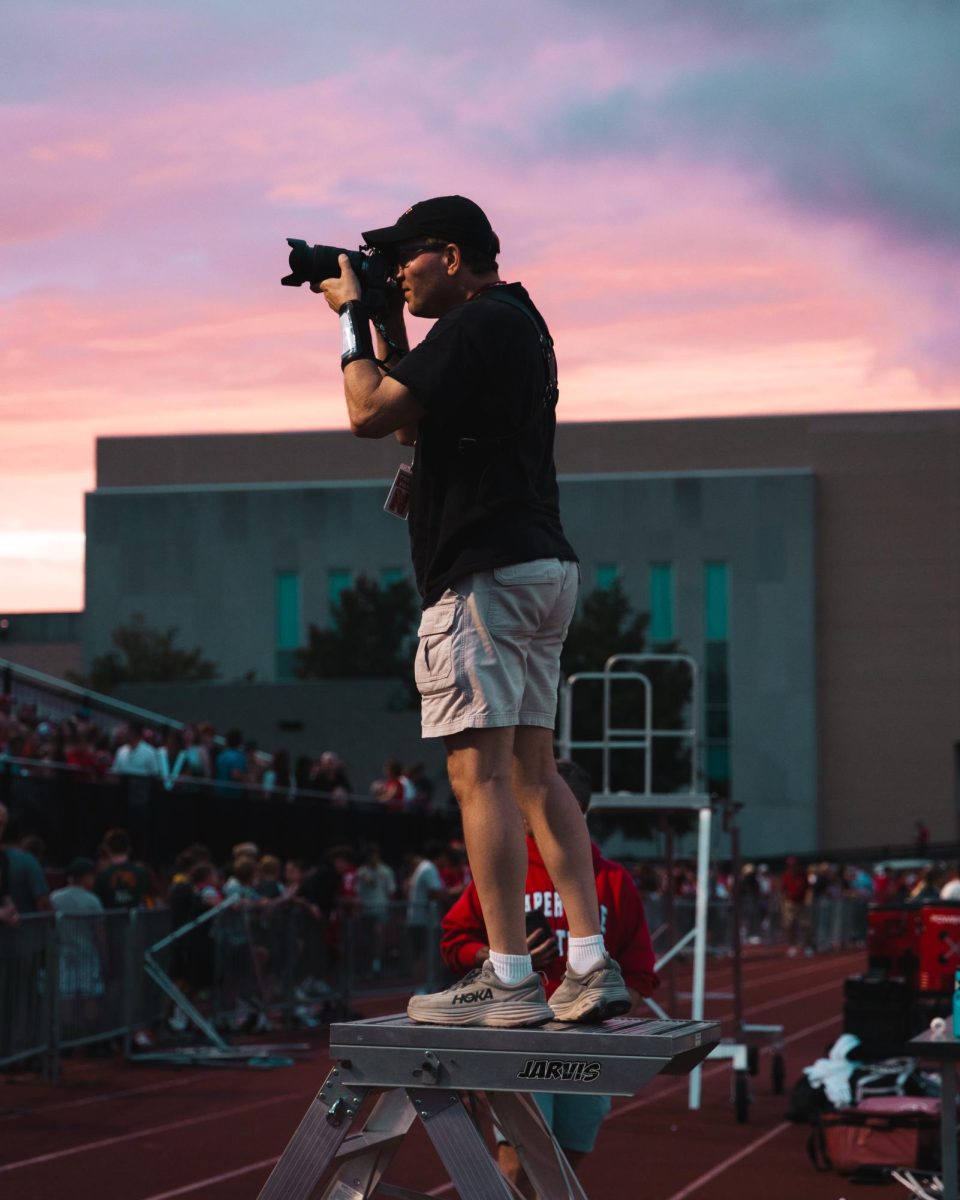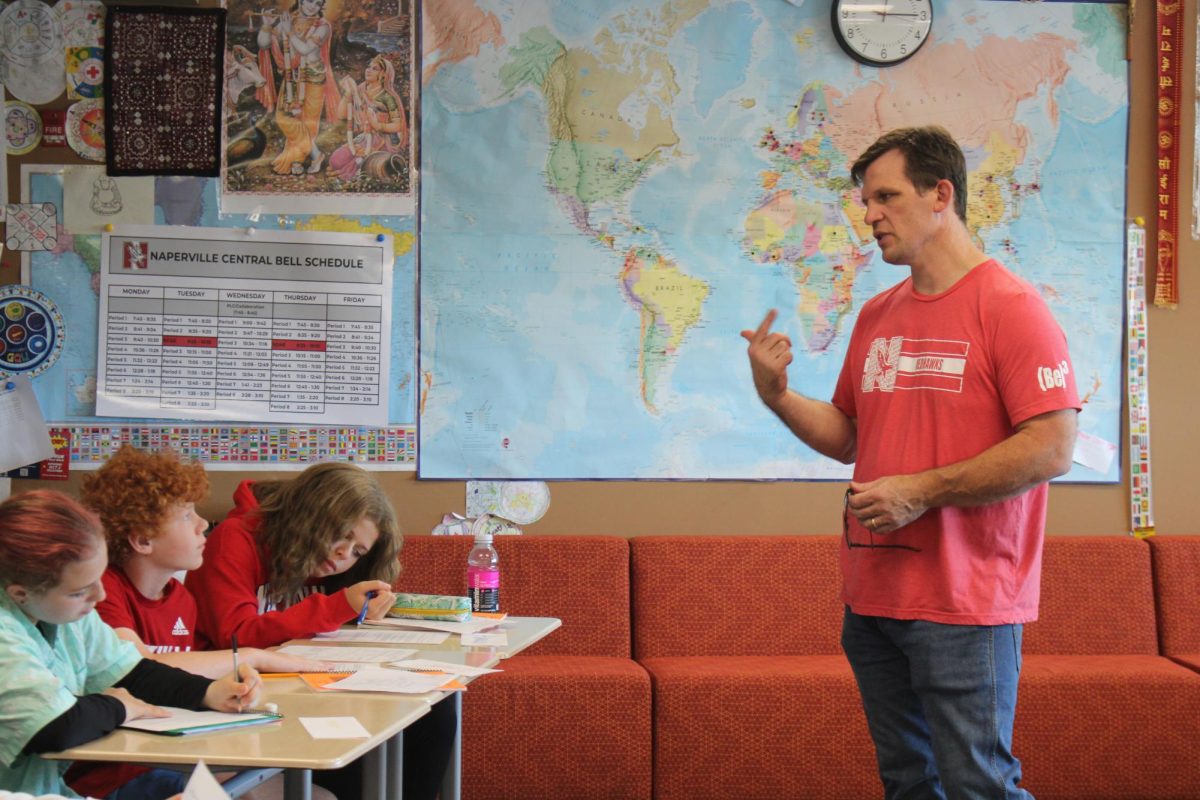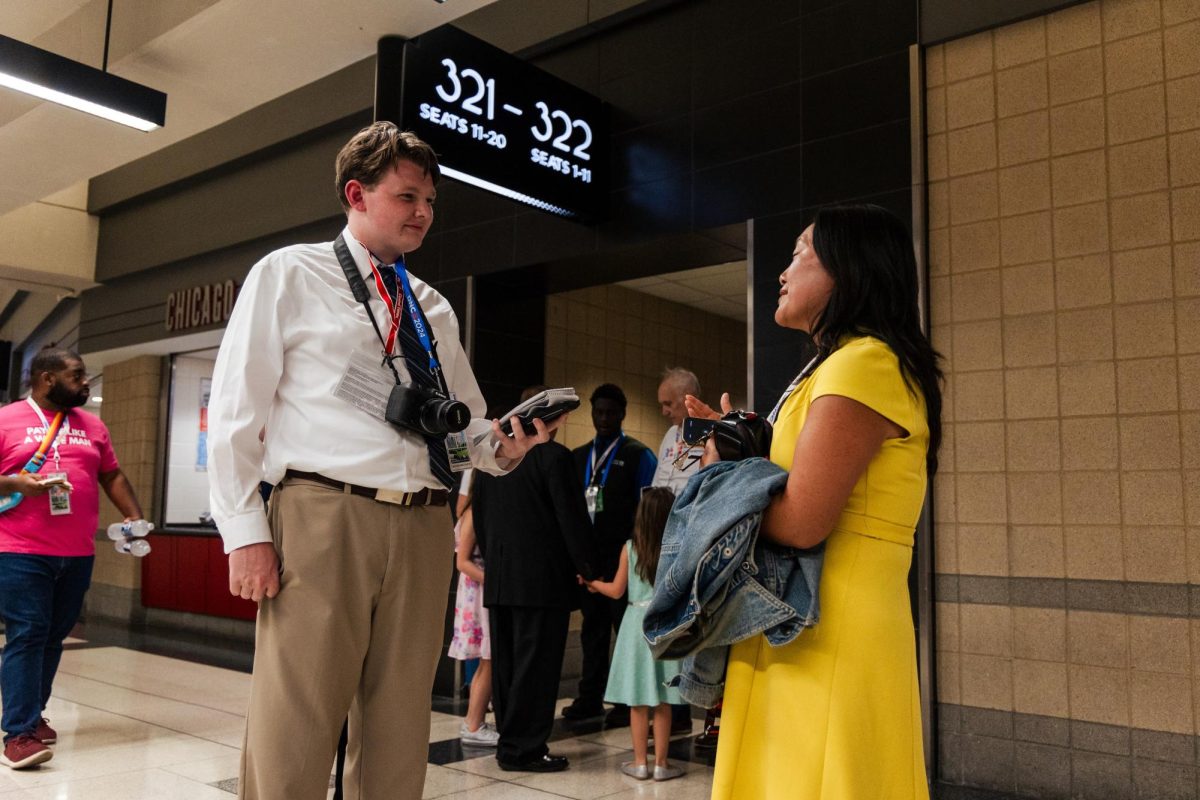‘We’re putting a Band-Aid on’: Late postings, low pay leave Special Ed department short on staff
September 30, 2019
Just three school days into the new year, Assistant Principal of Student Services Angie Ginnan sent an urgent email to Naperville Central staff. Its subject: “Help Needed!!”
“Special Ed is in DESPERATE need of assistants,” Ginnan wrote. “We are looking for teachers who are willing to sub for teacher pay as sped assistants during your off periods.”
The issue began at the end of the 2018-2019 school year. Special Education Department coordinator Elizabeth Jasinski estimates that there were eight to nine vacancies.
Typically, District 203’s Human Resources Department posts available positions on Frontline Education, self described as “school administration software for K-12,” at the beginning of summer.
“[The vacancies] didn’t get posted until really late in July,” Jasinski said. “We would have liked them to have been posted earlier because it’s a hiring process. You’ve got to find people through the website, interview them, check the references and [finally] there’s the background check.”
The delayed postings likely hindered the department’s ability to hire new staff, causing a shortage at Central. The shortage was further exacerbated by high turnover from the 2018-2019 school year.
“Quite a few of the specialist assistants who worked here last year decided not to come back this year,” Principal Bill Wiesbrook said.
The vacancies extend to the entire district.
As of Sept. 5, 38 special education positions were listed on the district’s Frontline Education page.
“We’ve been in communication with our other high schools and our program that serves our adult population, our 18 to 22 population,” Jasinski said. “They’re struggling also, so this is a widespread problem. This is not just a Naperville Central problem.”
With a select amount of candidates, the vacancies have left each school competing against one another.
“There’s 22 schools in the district,” Jasinski said. “They need teaching assistants, too. A lot of the time, we’re interviewing the same person, and they can only go to one spot. You’re kind of working against each other, sometimes, to get that same person.”
The Central Times contacted District 203’s Chief Human Resources Officer, Bob Ross, who declined to comment for this article. Instead, Sinikka Mondini, the district’s Executive Director of Communications, wrote in a statement: “While the majority of our hiring takes place in preparation for the start of a school year, we are always looking for highly qualified candidates to fill special education positions throughout the District to meet the needs of our students.”
In addition to the late postings, the district’s paraprofessionals’ salaries are low compared to other schools, potentially discouraging applications.
In an interview last year with the Central Times, now retired paraprofessional Jackie Earl said, “It’s very hard work, and it’s not for everyone. A lot of people might say we don’t get paid very well. We get paid the least of assistants in pretty much any district here.”
Earl’s words are reflective of certain hiring experiences in the special education department.
Jasinski recalls an interview in which “one person chose Schaumburg because the pay was significantly better.”
According to company review site Glassdoor, Schaumburg High School and others in Township District 211 pay paraprofessionals $18/hour, while their Naperville counterparts receive $14/hour. Assuming that, like those in District 203, Schaumburg’s paraprofessionals work for 7.5 hours a day and 38 weeks a year, the difference amounts to nearly $8,000 annually.
“If there’s a lot of jobs to pick from, and you are qualified, maybe pay is going to be a big factor, along with the job duties,” Jasinski said. “But pay always is a factor.”
An employment application for a District 203 paraprofessional lists several physical tasks under work environment.
Physical demands include “significant lifting, carrying, pushing, and/or pulling; some climbing and balancing; some stooping, kneeling, crouching, and/or crawling; and significant fine finger dexterity,” the application reads. “Generally the job requires 50% sitting, 25% walking, and 25% standing. The job is performed under conditions with some exposure to risk of injury and/or illness and in a clean atmosphere.”
In addition to comparably low pay, the challenging nature of a paraprofessional may deter some from applying or increase turnover.
“It’s kind of a high stress job,” Jasinski said. “It’s a job that the people [who] are doing it really enjoy. I think it takes a special person and so it’s not the type of job that everybody would apply to or everybody would want. I also think that some of the kids are big, adult-sized children, and some of it’s physical work too. Maybe not everybody can do that type of work.”
Paraprofessionals, however, are highly important to the special education department’s operations.
“They are super busy, hard working, just critical to the needs of our students and to make this program work,” Jasinski said, adding that among other tasks, “They do everything from escorting students to the classroom, walking them to the classroom, making sure they’re safe in the hallways, being with them in the classroom, working at academic work or working directly with the teacher and a small group.”
Wiesbrook agrees.
“They do a lot behind the scenes [and] never or rarely do they get celebrated like they should,” Wiesbrook said. “They’re doing important things and helping kids that many people aren’t aware of and don’t notice.”
Because of the vital role paraprofessionals pay, the existing vacancies are felt strongly, adding pressure on the staff and students.
“We are working our tails off to make sure that students are safe, kids are safe, staff are safe,” Jasinski said. “Because I think it’s kind of high stress here right now, it’s affecting some of the other kids in the classes, too.”
To address the shortage, special education staff have begun picking up tasks outside of those that their positions require.
“We are taking on duties that haven’t been part of our job before,” Jasinski said. “There are some things that I do in the evening now because I want to go into the classroom and help out in situations and serve as a paraprofessional for that moment.”
Central’s administration, staff, and students have remained supportive, with some volunteering their time to help students in the department.
“Mostly what I’ve done is given approval for other staff members to pinch hit and sub,” Wiesbrook said.
Teachers who have a free period, for example, may assist a special education staff member during that time.
“A lot of people have stepped up and offered to help and offered to support a student in a classroom,” Jasinski said. “We’re very fortunate for that. Of course, we’ve used all of our staff that we’ve potentially possibly could. We’ve had to reach out to the rest of the staff and some people have really stepped up, and I think the school has noticed the need.”
Even so, the current situation isn’t sustainable without new hires.
“Every day we’re redoing our schedule based on the needs of the student or if somebody’s out, or if something else comes up that’s big [or] more severe at the moment,” Jasinski said. “We’re kind of putting a band-aid on day by day, sometimes even hour by hour.”







